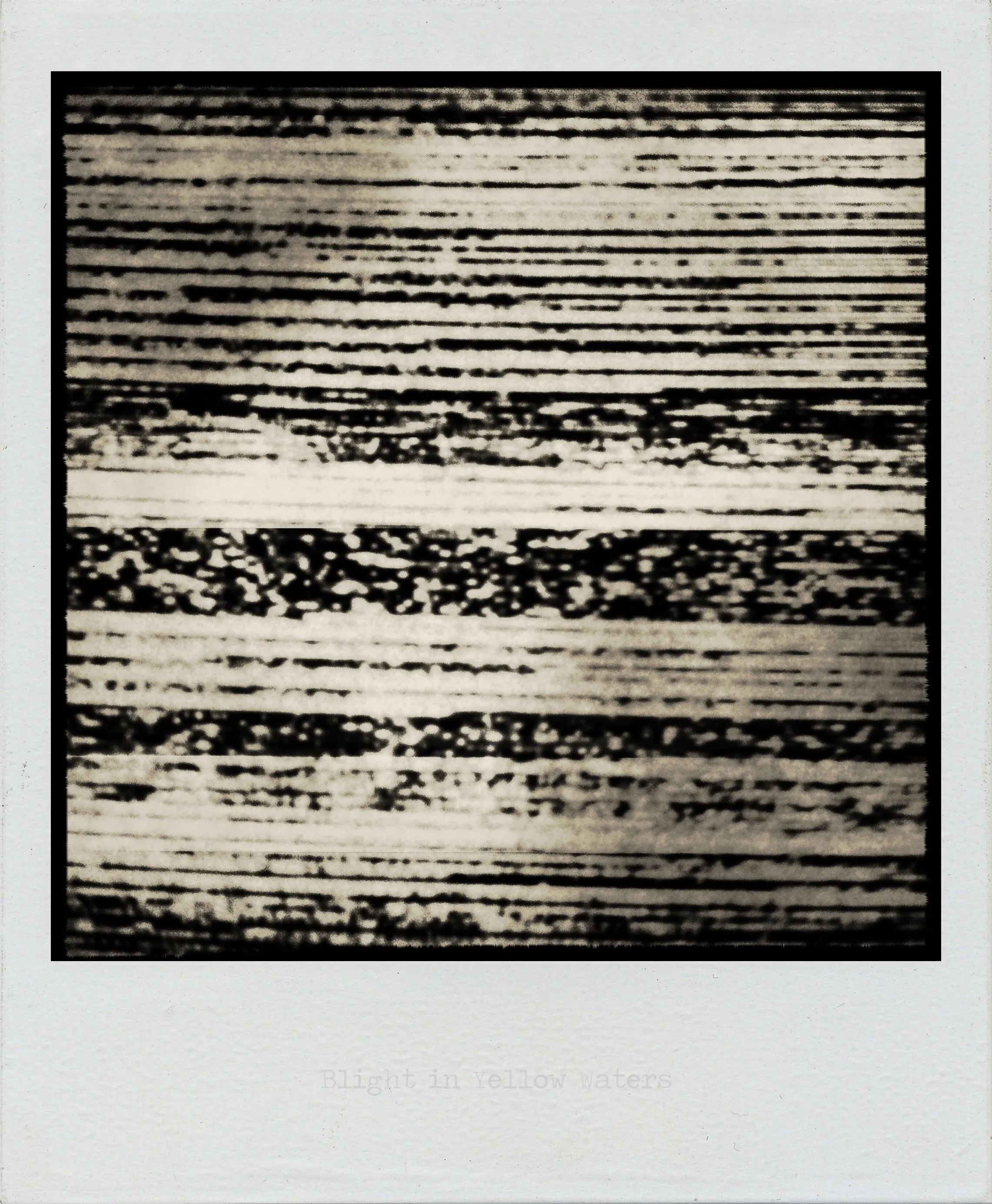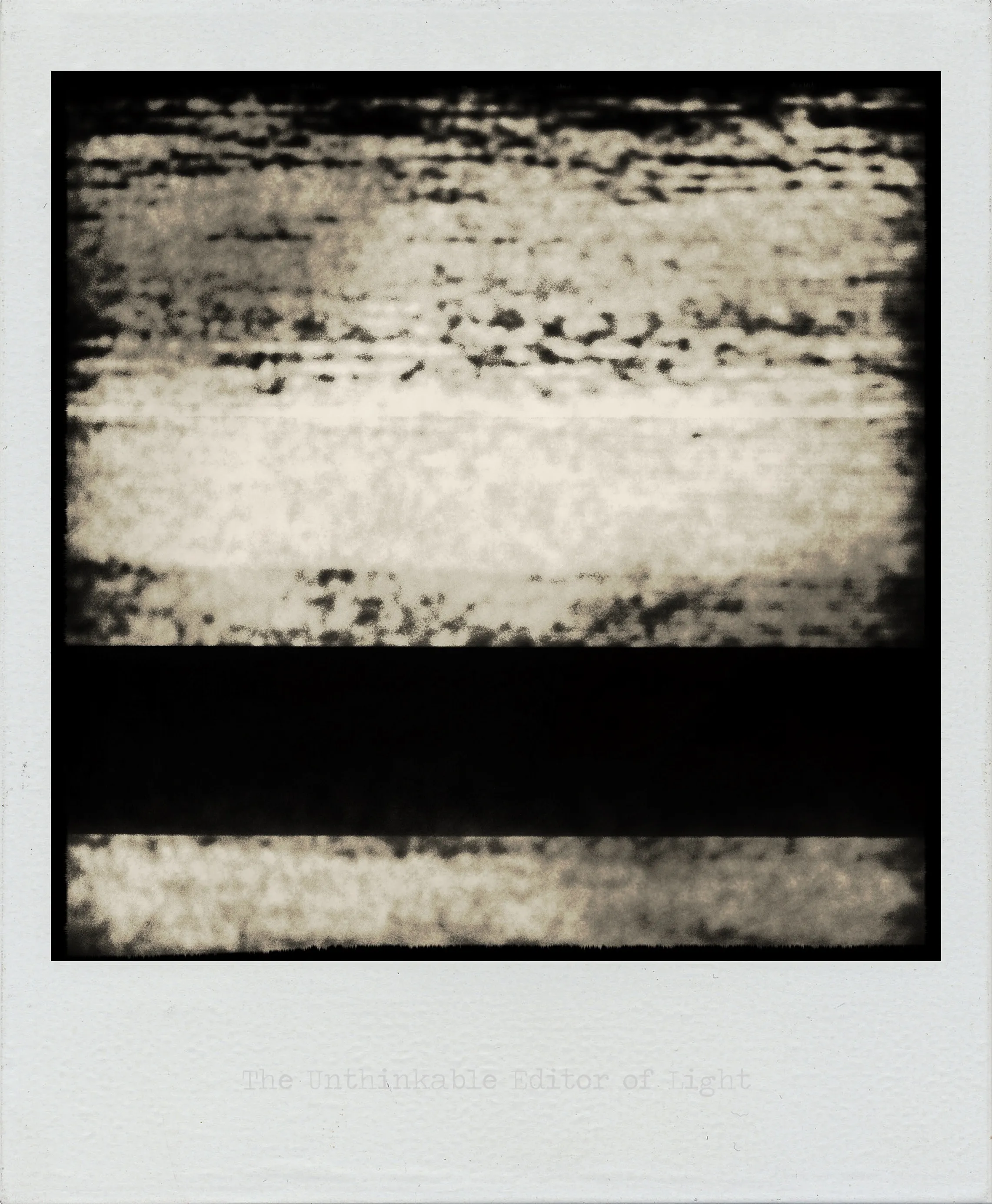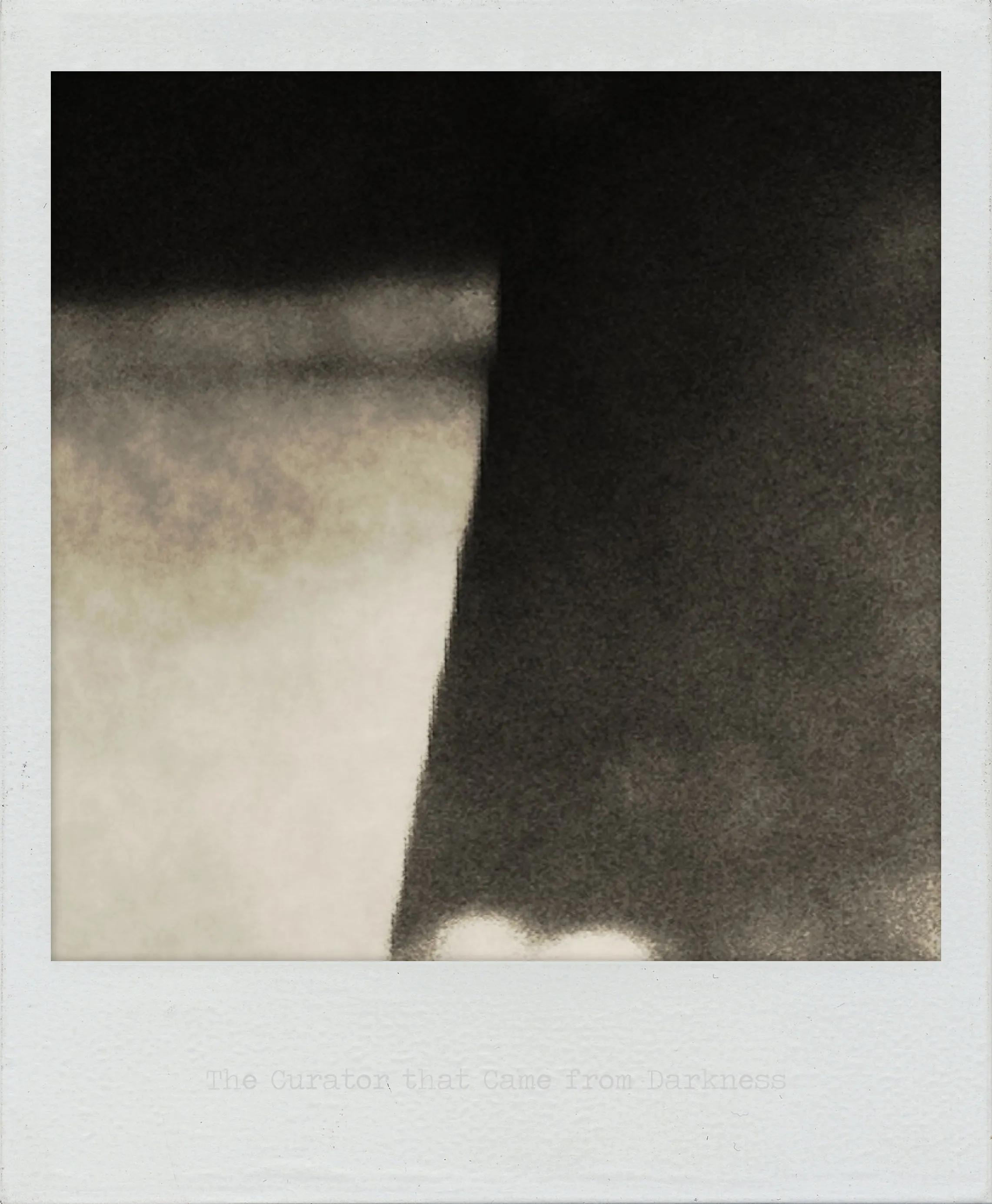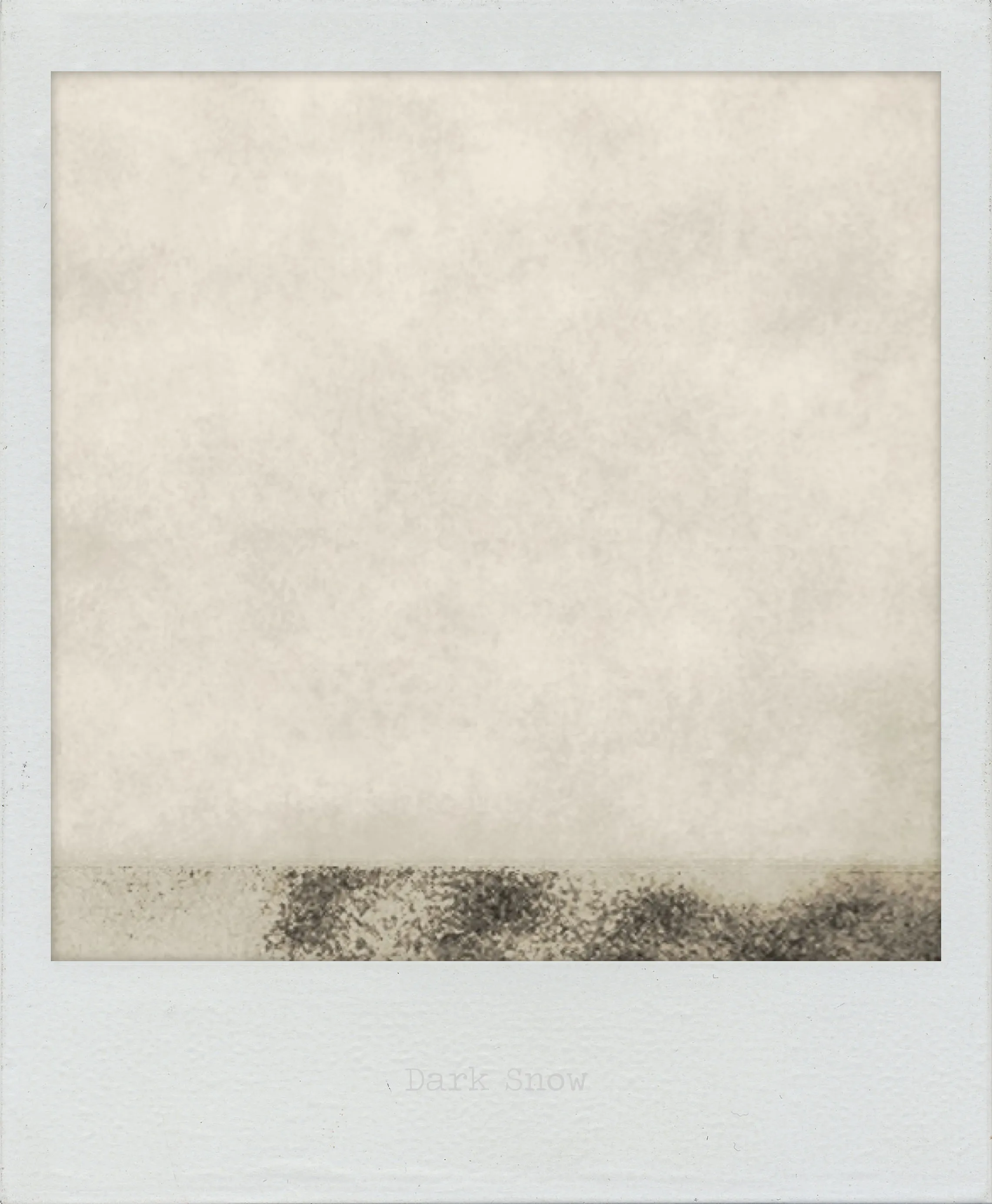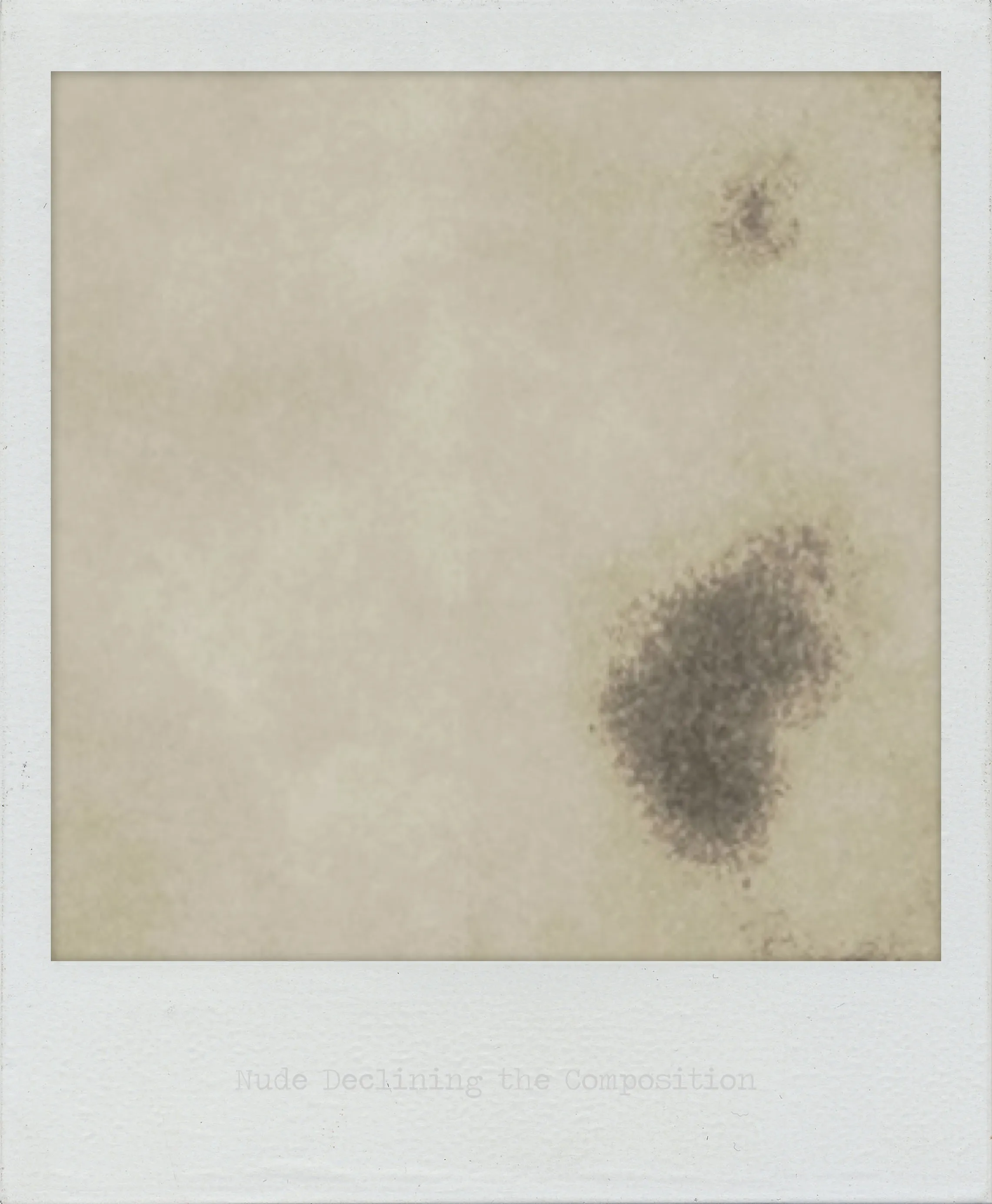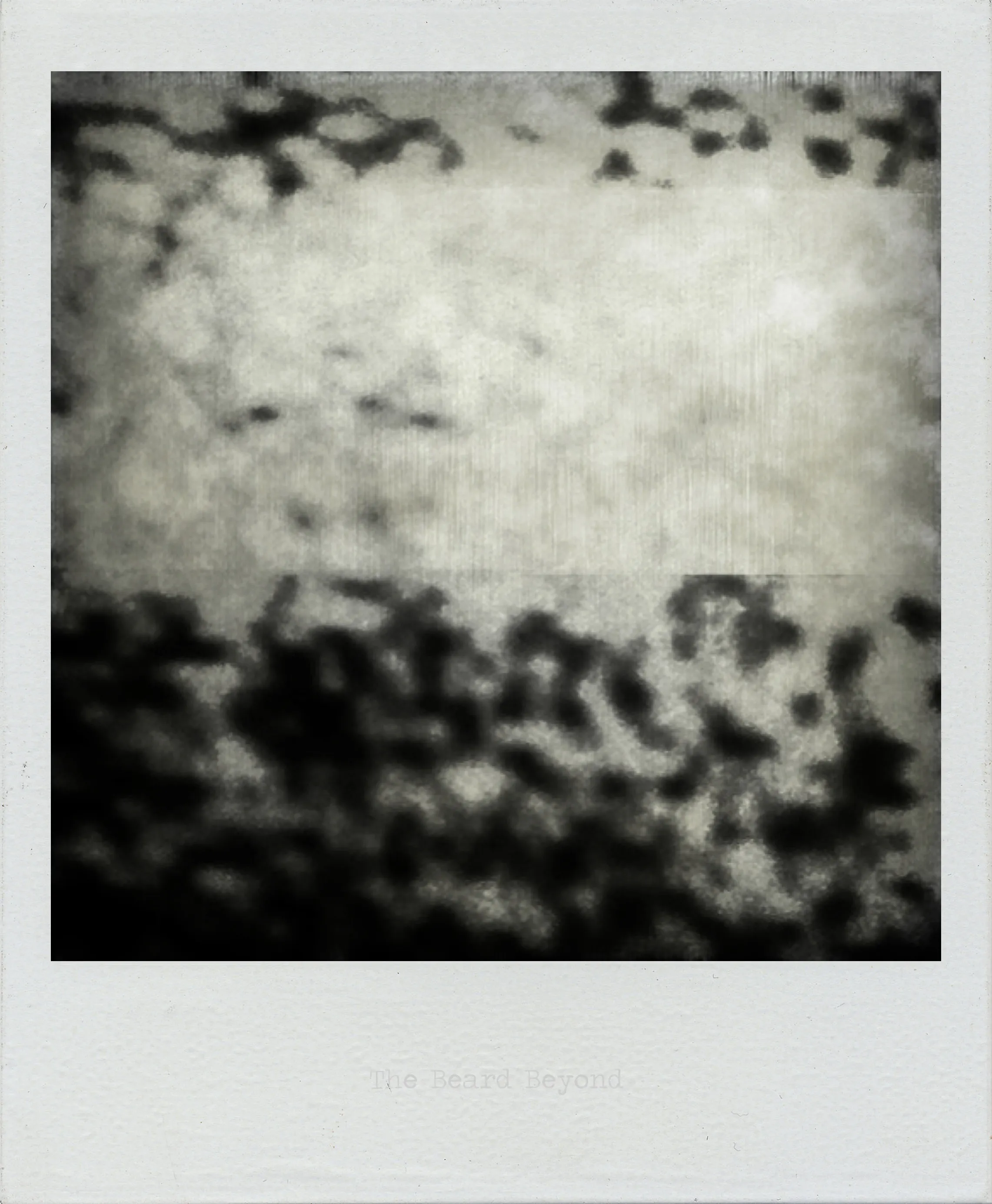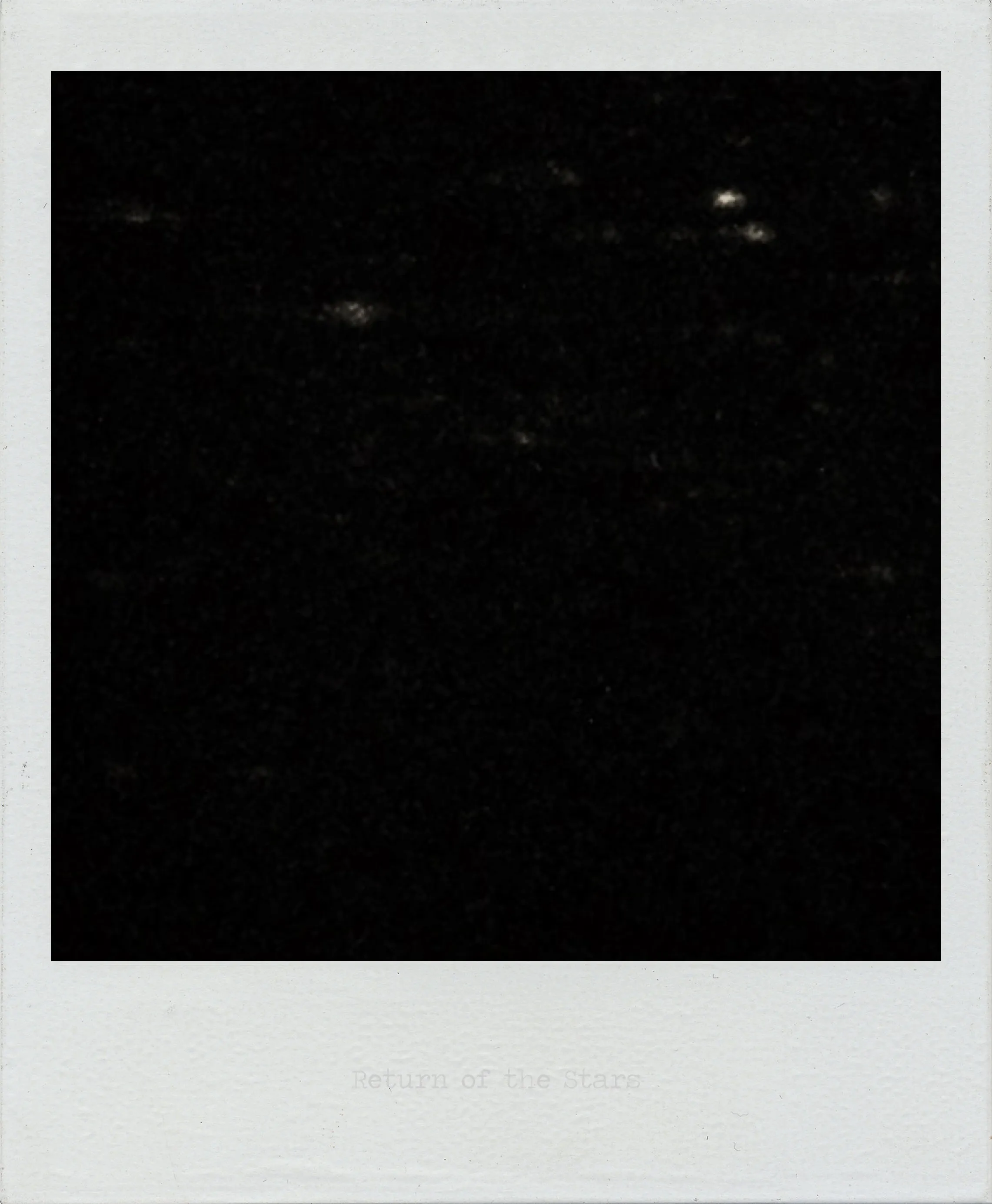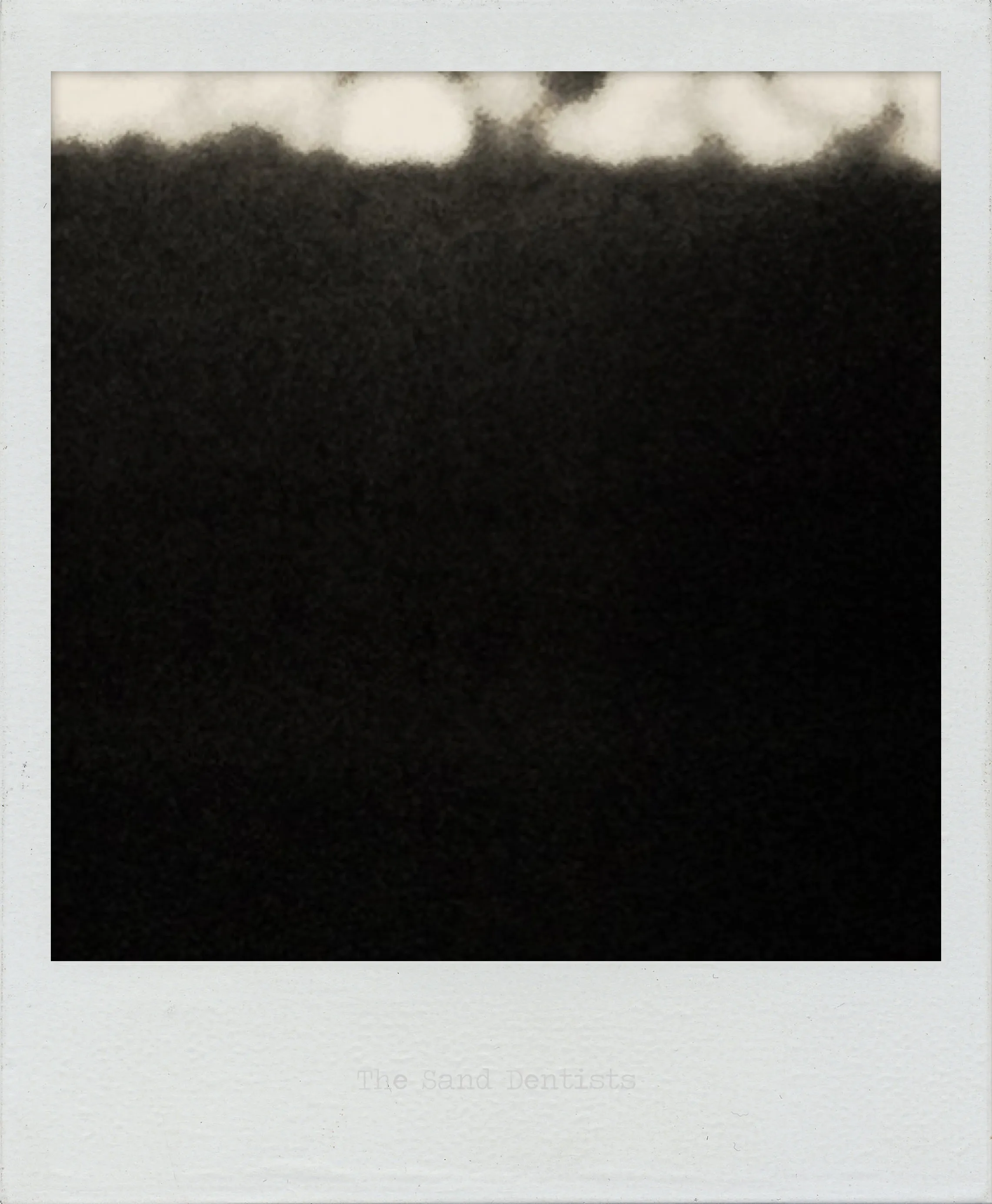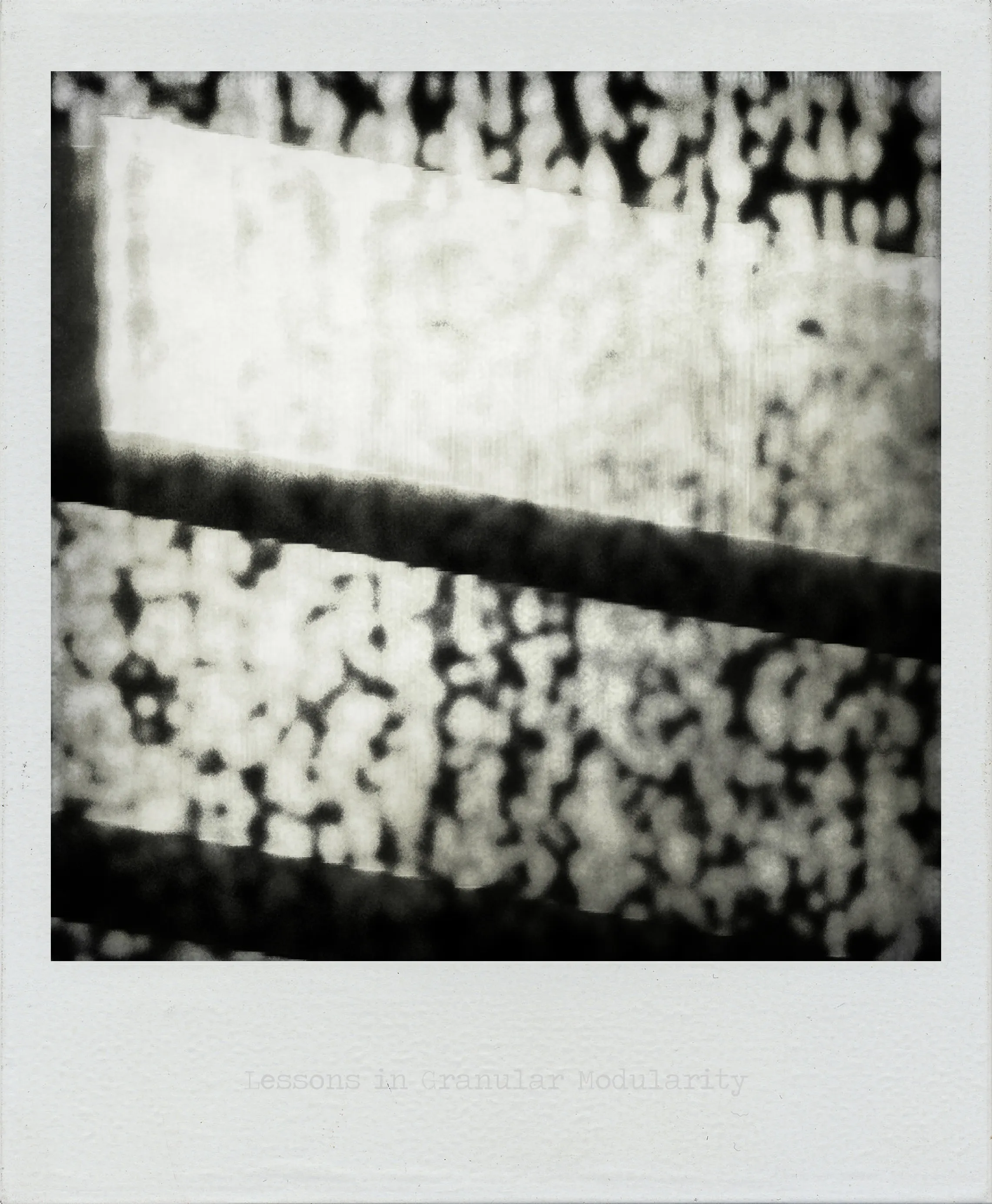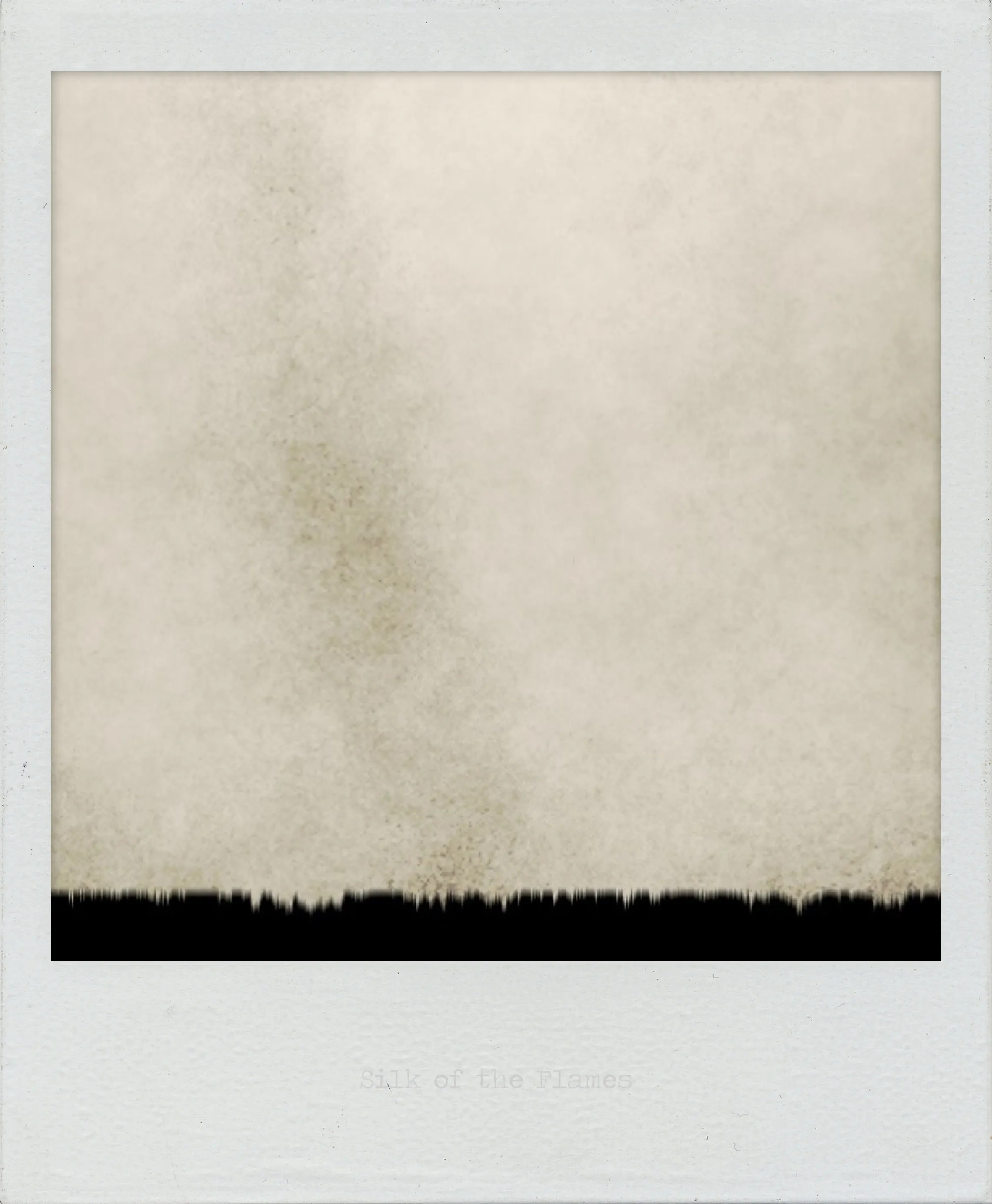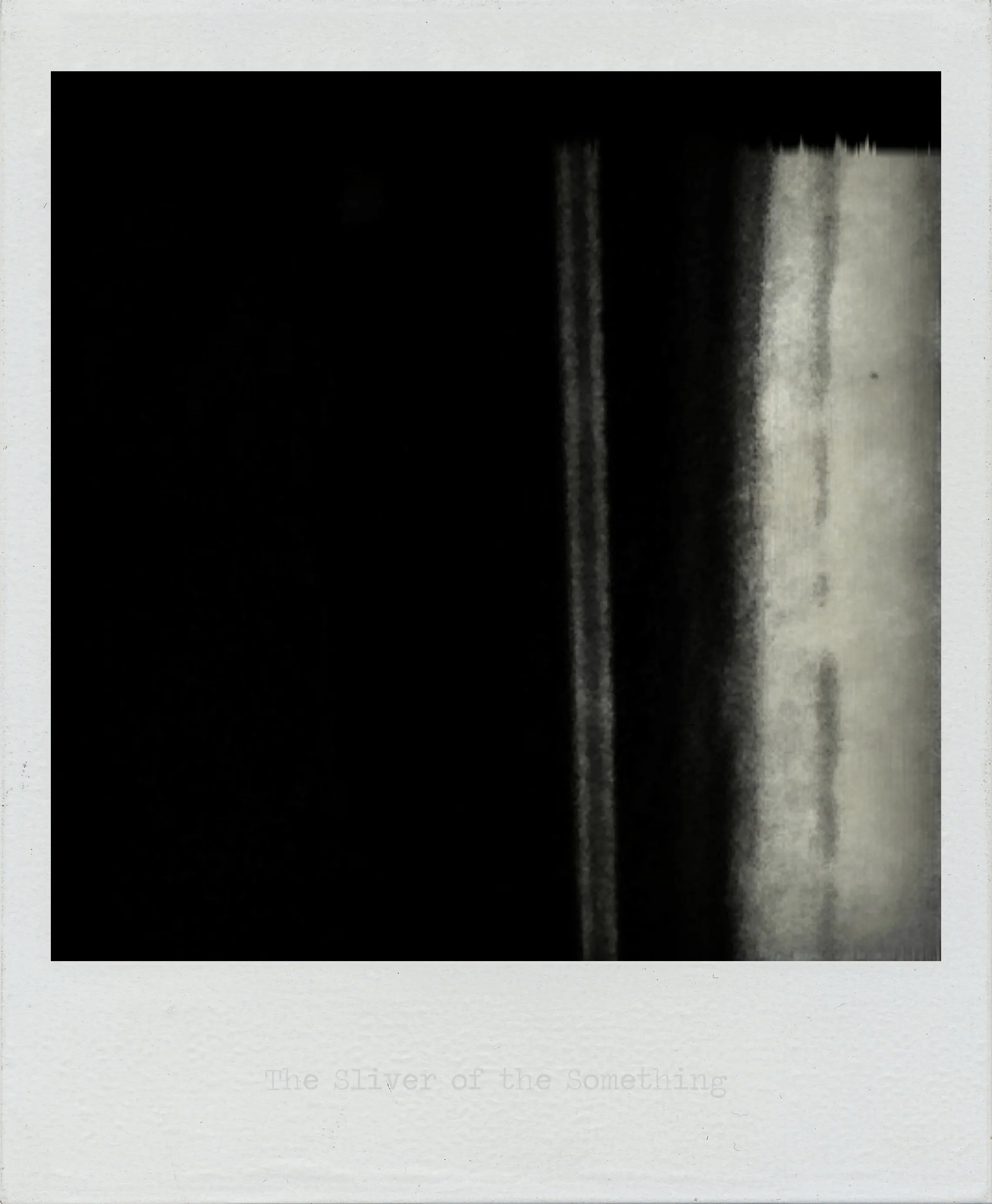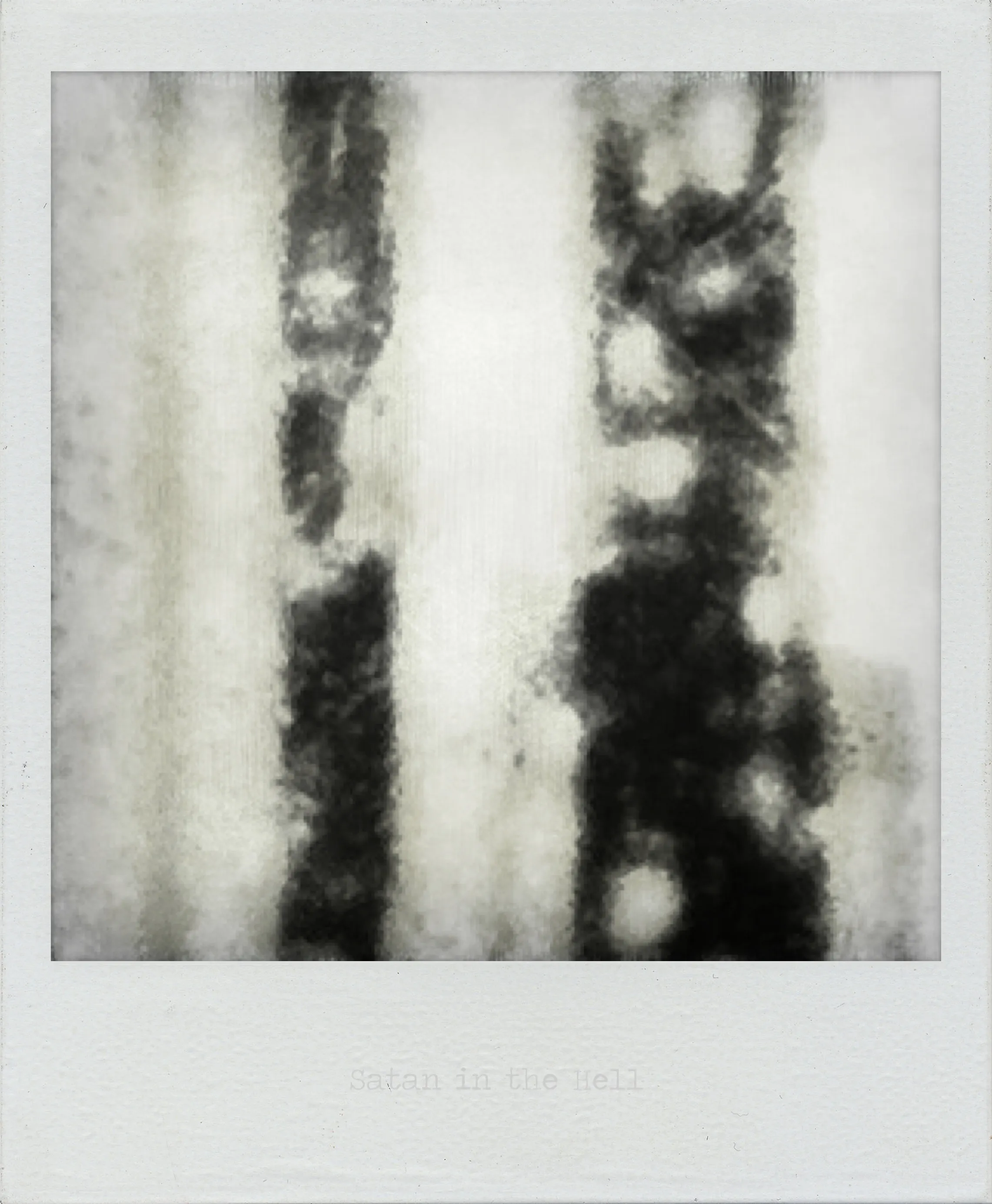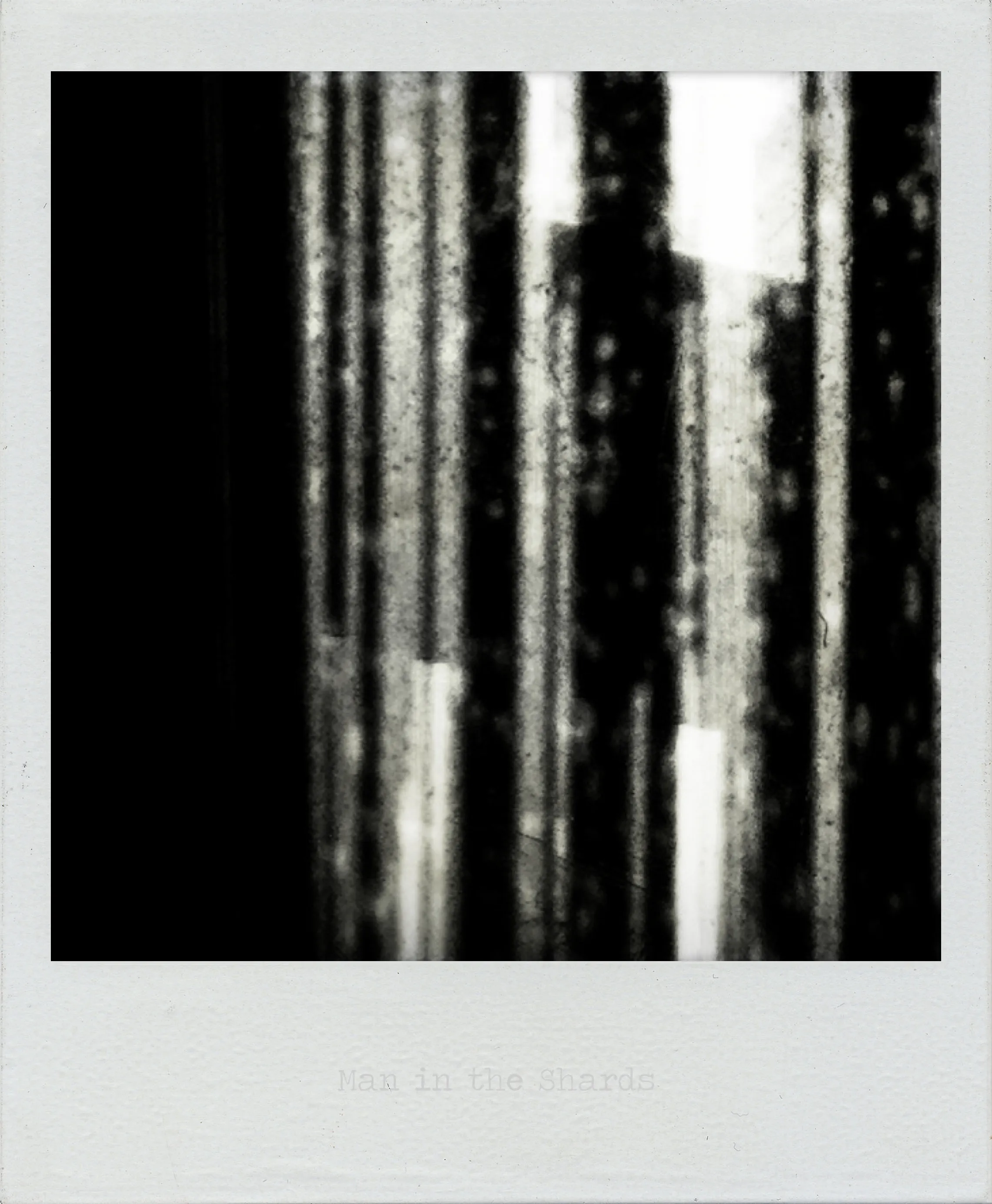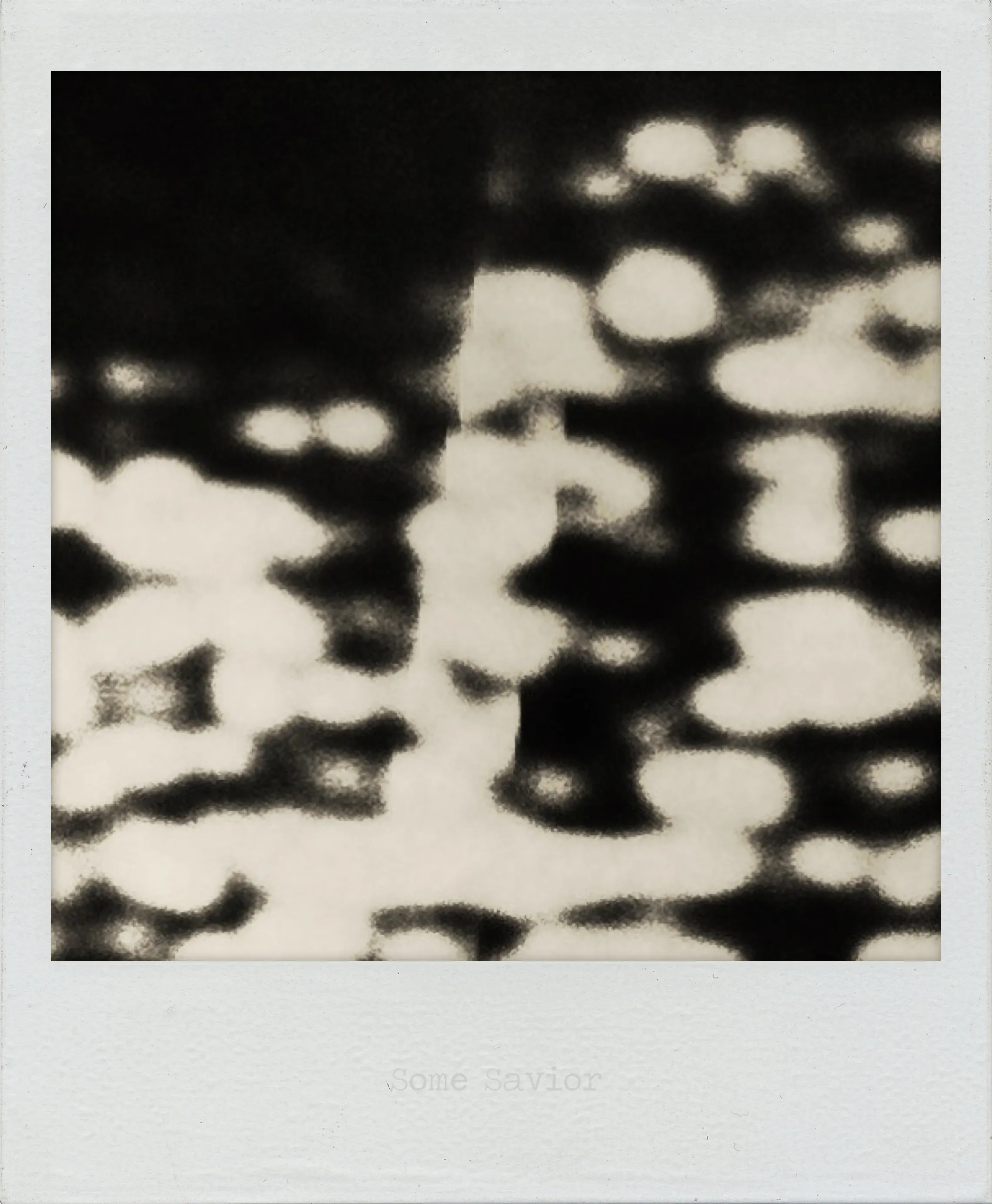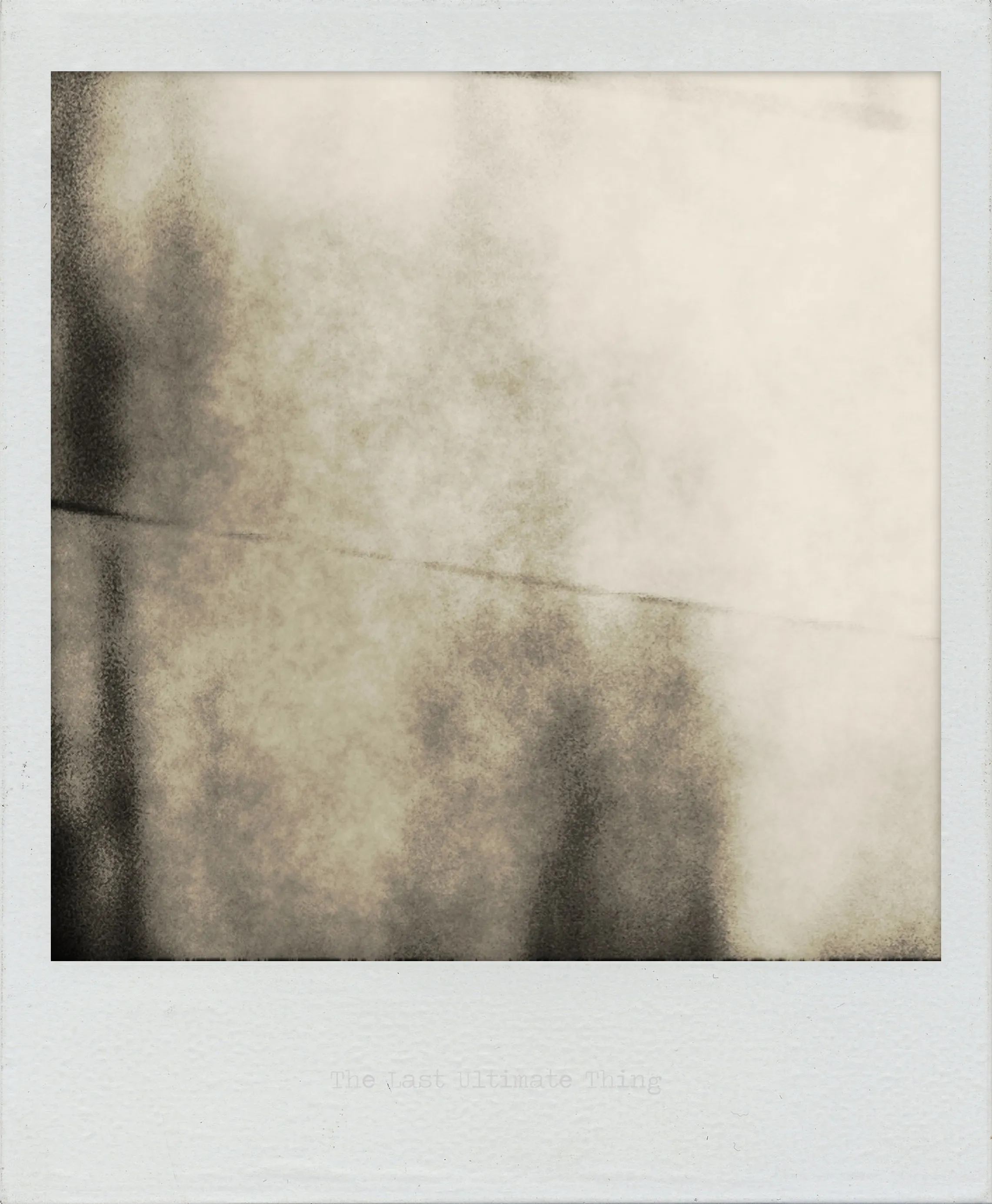The titles came separately. Hundreds were generated using random title generators, then paired with images through subjective association—my own reading of which random phrase best fit which random pattern. Dark Snow, Satan in the Hell, The Beard Beyond—language providing a framework for seeing something in nothing.
A third layer was added: AI-generated interpretations. Given only the image and its title, with no context about origin or process, the AI performed the same act of projection humans do naturally—finding narrative, metaphor, and meaning in pure abstraction. Its readings mirror our own pattern-seeking impulse, the need to organize chaos into something recognizable.
The work operates on the gap between what’s there and what we see. Television static is definitionally meaningless—random electronic interference. Yet magnified and framed, it becomes something to look at. Add a title, and it becomes something to look for. The brain cooperates eagerly, finding landscapes in grain, figures in density variations, intention in accident.
This isn’t new territory. Abstract photography has long explored how we project onto ambiguity. What Noise adds is the explicit foregrounding of randomness at every level: the source material itself, the arbitrary selection of frames, the algorithmically generated titles, and finally the AI’s confident interpretation of the pairing. Each layer of meaning is constructed from chance, yet each feels persuasive in the moment of viewing.
The aesthetic is forensic. These are photographs of a real analog phenomenon, not digital constructions. The only manipulation is attention—choosing where to look within the static, how close to get. What’s normally dismissed as visual garbage becomes the entire subject. Background becomes foreground through nothing more than sustained focus.
Formally, the images suggest other things: Rothko fields, concrete textures, damaged film, astronomical photographs, biological specimens. The grain creates micro-patterns that the eye wants to organize. Some images feel ominous, others nearly blank. The variation comes not from different sources but from different regions of the same chaotic field.
Noise is about projection—how readily we construct meaning when given even minimal prompts. The static doesn’t change. The titles are arbitrary. The AI has no understanding. Yet together they produce the convincing illusion of intention, of something being communicated. The work doesn’t celebrate this capacity or condemn it. It simply demonstrates it, repeatedly, across sixteen variations of the same fundamental emptiness.
What persists is not meaning, but the apparatus of meaning-making—human and artificial, functioning identically in their willingness to find signal in noise.
Essay written: November 2025
